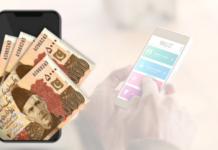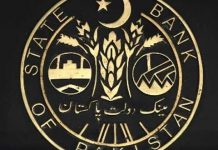A chance encounter on Twitter with a Stanford academic who lectures on entrepreneurship and venture capital sparked my interest in revisiting my PhD dissertation. Trevor Loy (@trevorloy) is of the firm belief that a startup ecosystem in any country cannot reach critical mass unless it has direct flights to and from Silicon Valley. Being a VC himself and having advised emerging global startup ecosystems for more than 25 years, his view on airline connectivity carries weight.
If VCs and investors from Silicon Valley can catch a direct flight to wherever it is in the world that you are building your startup ecosystem, there is a high likelihood that you have a chance in hell of succeeding. If you are in isolation you’ve got to be as big as China. There are no exceptions.
And that brings me to my 1986 PhD dissertation titled, “Information Cues and the Marketing of Pakistan’s Exports.” It has nothing to do with the startup world. The only tangential connection I can draw to the world of computers and startups is that I do have a five and quarter inch floppy disk with my thesis saved on it. However, the importance of connectivity is something that I based my entire dissertation on. Just as an emerging startup ecosystem is dependent on connectivity, exports from emerging markets depend on connectivity with importers around the world.
In 1986 I wrote: “Establishing good communication links not only for the transportation of products but also for speedy interaction between buyers and sellers in the international marketplace tends to encourage trade. A country that has an efficient international telephone network, that provides its exporters ready access to telexes and that provides an environment conducive to the growth of international courier services is likely to receive a large number of export enquiries. Importers may be willing to include in their buying itineraries those countries that do not have any visa or travel restrictions, and that have internationally known hotels …. A country that has a well-developed network for the exchange of communications is, therefore, better endowed to increase its market share of world trade.”
Ok, this was written way before WhatsApp and Zoom and even before the internet. Most people will not know what a telex is, but in my thesis I go on to talk about the need for marketing and advertising, the need for taking part in trade shows and the importance of sending trade delegations abroad – all factors that improve connectivity between the buyer and seller. While prices are important, I mention that a 50% devaluation of the Pakistani rupee in 1982 did not make a dent on exports. Nor did it curtail imports. Déjà vu in 2021?
A PhD in Economics that begins with “The Traditional View ” and quickly talks about “A Bend in the River” and has a chapter titled, “Pakistan, Bloomingdales and Calvin Klein,” is certainly not your standard PhD fare. Of course, some “transformed logit models” and “nonlinear three staged least square models” are thrown in for good measure – they wouldn’t have let me off without going through months of regression analyses that ended abruptly when my advisor hinted to me that you can beat the data until it says what you want it to say.
The concluding paragraph of my dissertation is an exhortation to the powers that be that they have repeatedly tried devaluations and price incentives and other World Bank/IMF prescriptions, it is now time to think differently. “What perhaps remains virtually untried is a marketing and promotional campaign that informs people everywhere that Pakistan exists. That Pakistan can meet their import needs. And that “Made in Pakistan” is good!”
Thirty-five years after the publication of my dissertation, if perhaps someone were to give credence to the need for promoting Pakistan and increasing its score on connectivity, only because it was highlighted by a Stanford academic, I would be happy to give Trevor Loy all credit for helping to increase Pakistan’s exports.






















